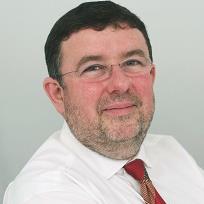News / NHSI to focus on locum cost reduction

The oversight body said this was a huge achievement, but more work was needed – providers overshot their planned spending by £559m and only 46 providers achieved their agency expenditure ceiling.
Much of this was due to medical locums, in particular because of a shortage in A&E doctors. It was working with the Royal College of Emergency Medicine to address this shortfall and has set a target of a £150m year-on-year reduction in locum spending in 2017/18.
NHS Improvement also focused on keeping permanent and bank pay costs down. The overall provider pay bill was almost £51bn, £811m more than plan and £1.8bn more than 2015/16. Pay inflation, including pay rises, drift and pensions were significant elements of this, adding an estimated 3.3% to costs. NHS Improvement said that taking these pressures into account, the pay bill grew by 0.5% in real terms. However, this should be seen in the context of a 2.4% growth in cost weighted activity.
Overall, providers finished the financial year with a £791m deficit (compared with £2.4bn in 2015/16), after application of the £1.8bn sustainability and transformation fund (STF). NHS Improvement said the final position was driven by agency staff and other savings, which totalled £3.1bn (3.7%). The oversight body’s work with trusts in financial special measures had generated more than £100m in savings, while its Financial Improvement Programme had identified a further £100m.
However, cost savings fell short of plan by £266m, largely due to the adverse variance in pay costs. Three-quarters (£2.3bn) of the savings were recurrent – below the planned level of 92%.
The growth in acute activity and rising costs led to a £1.1bn overspend on plan for non-pay items, largely driven by drugs (£139m), clinical and general supplies (£343m) and premises (£382m). The record level of emergency demand had constrained providers’ elective capacity and many paid for waiting list initiative sessions or had outsourced work, costing £209m and £381m, respectively. This was significantly more than the year before, NHS Improvement said.
Delayed transfers of care rose by more than 20% with a direct cost of £173m, with the full cost likely to be much higher.
Around £2.9bn was spent on capital schemes – more than £1bn less than planned, but £173m more than the Department of Health target. In 2017/18 providers were planning to spend £4bn, though the Department’s target is just over £2.7bn.
Pre-audit the overall financial position was a deficit of £735m, but this moved to £791m as two trusts deferred transactions to the current financial year. These were Royal Free NHS Foundation Trust (£47m) and Royal Liverpool and Broadgreen University Hospitals NHS Trust (£10m).
As a result, £21m of STF was returned and reallocated based on audited results. This meant 49 trusts that had outperformed their control totals by more than £1.5m received a bonus payment. In total, 217 (91%) trusts received STF, including 176 trusts receiving ‘pound for pound’ incentive money for exceeding their agreed control totals – 177 providers received bonus STF for achieving their control total at year end.
‘The NHS has delivered this financial turnaround at the same time as dealing with very high levels of demand – particularly over the winter period. In addition, there have been great efforts made in improving outcomes for patients,’ said NHS Improvement chief executive Jim Mackey.
‘People should feel justly proud of what they’ve achieved this year, and go into [2017/18] knowing that, whilst it will be hard, the challenge certainly is not impossible.’
He added that providers had been challenged to achieve an overall deficit of £496m in the current financial year.
NHS Provider chief executive Chris Hopson (pictured) said: ‘These figures should be seen in the context of the enormous financial pressures trusts face, but also the solid progress that has been made in controlling the runaway deficits of the last three years.
‘While a year-end figure of -£791m exceeds the -£580m target set by national bodies, it is substantially better than the £2.45bn deficit in 2015/16, and is a significant improvement on the third quarter forecast issued in February, which stood at -£886m. This reflects a huge amount of hard work to control costs, increase productivity and improve efficiency whilst continuing to provide outstanding patient care with record levels of demand.’
Related content
We are excited to bring you a fun packed Eastern Branch Conference in 2025 over three days.
This event is for those that will benefit from an overview of costing in the NHS or those new to costing and will cover why we cost and the processes.